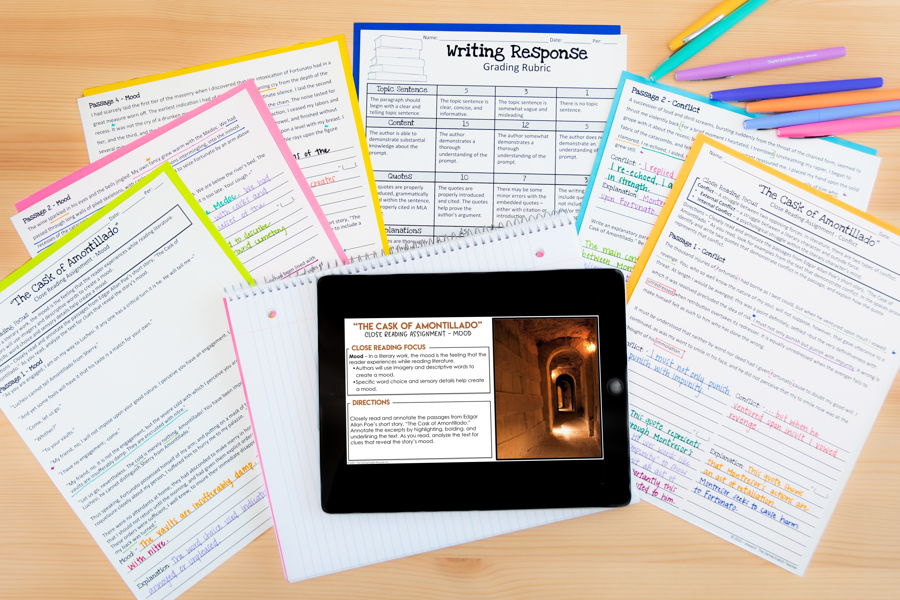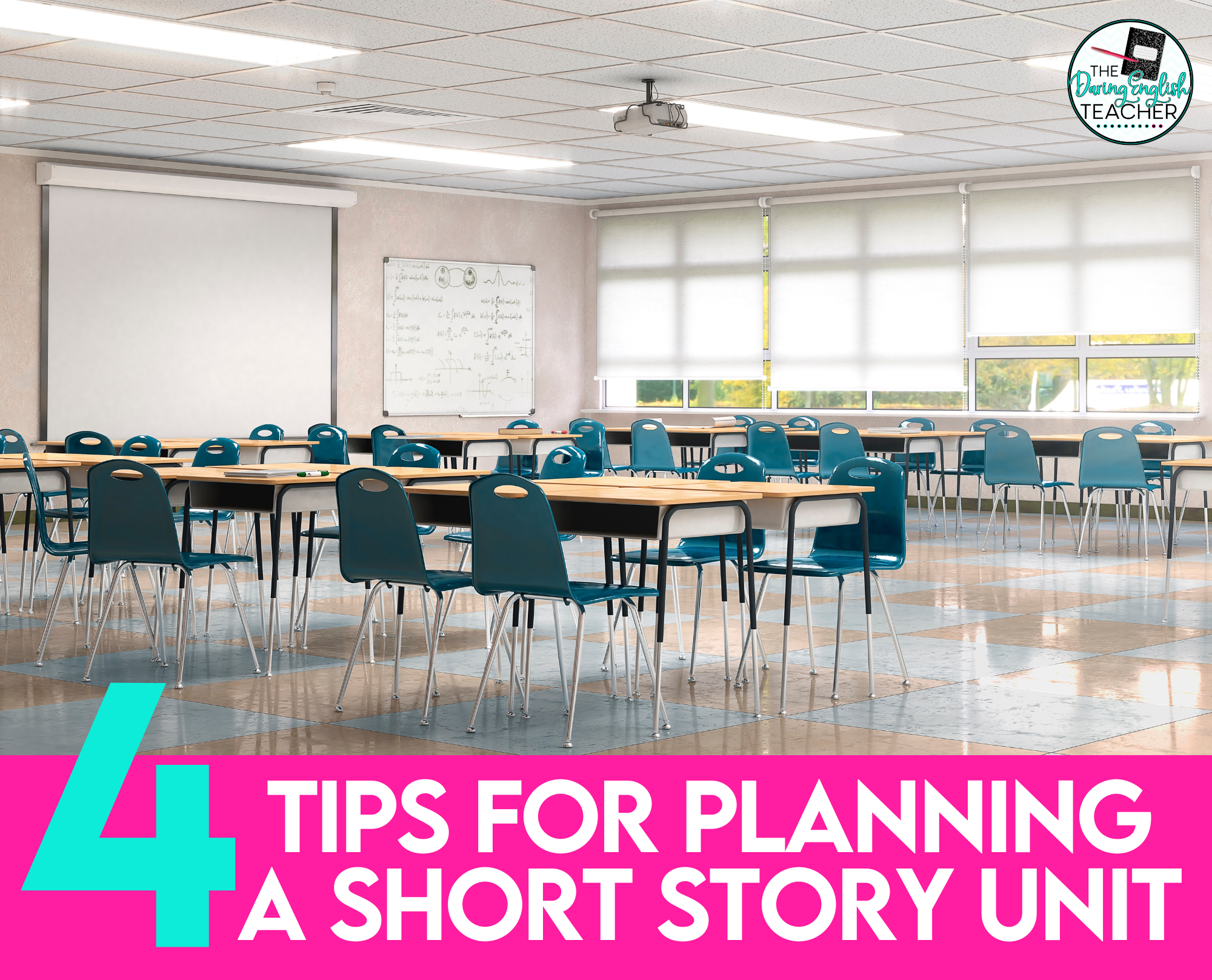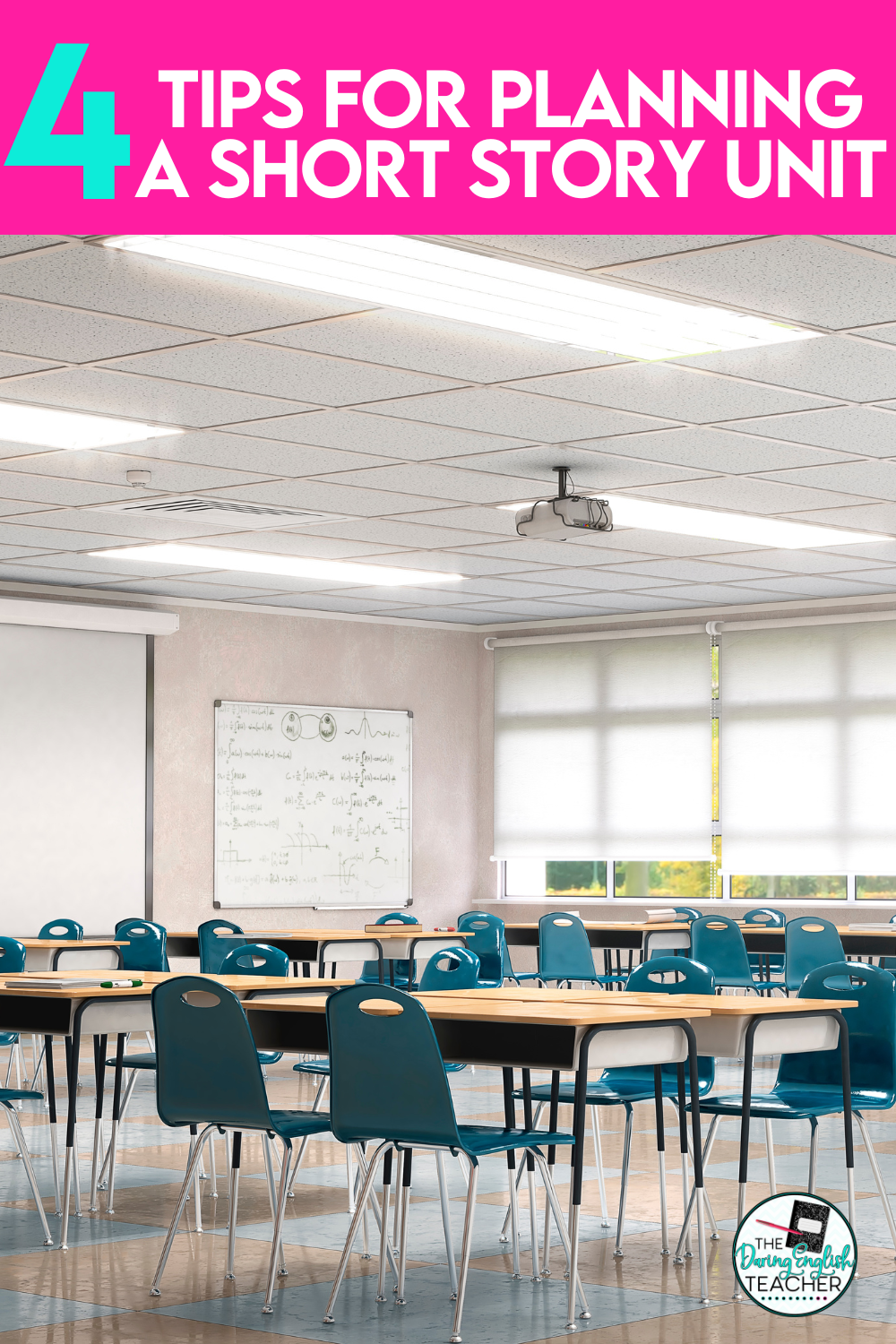Planning a short story unit can be daunting, but it doesn’t have to be. Here is a look at how I plan my short story unit. HINT: It requires backward planning! When I teach short stories, I like to use this close reading unit that follows along with these four steps.
Step 1: Start with a story.
Select a story you want to read, and then select all of the stories you want to read. Your short story unit doesn’t have to have tons of stories to make an impact. I usually include 4-5 stories.
Step 2: Plan out your literary elements.
Map out the strongest literary elements from each story and plan to focus on just those elements as you read each story. You’ll want to select no more than three at the very most. In this phase of planning, try to make sure there isn’t a huge amount of overlap. Yes, you can include the same element twice. However, in each story? That’s too much! Instead, spread them out over the series of stories you select.
 |
| Short Story Close Reading Unit |
Step 3: Plan out your end goal.
Looking at the stories and devices, come up with an end-of-unit assessment or writing prompt and a paragraph prompt for each short story. Before planning individual activities for each short story, you want to ensure they all point to the end assessment. Students should be able to go back to their notes and work and pull quotes and ideas for the end-of-unit assessment.
Step 4: Read each story with intention.
Knowing the prompt for each story and the end-of-unit assessment, make sure that you read with intention. Help students identify key ideas and quotes along the way. If you’ve selected suspense and foreshadowing as the terms for your current story, pause and have students record these elements as you read and after you read.
It’s all about using backwards planning and planning your short story unit with intention!
Here is a look at some of my favorite short stories to teach and the devices I like to pair with them.
“Story of an Hour” by Kate Chopin
- Irony
- Motif
- Symbolism
- Tone
- Setting
“Wife’s Story” by Ursula K. Le Guin
- Point-of-view
- Symbolism
- Motif
- Theme
“The Seventh Man” by Haruki Murakami
- Symbolism
- Conflict
“Thank You, Ma’am” by Langston Hughes
- Characterization
- Theme
- Conflict
“Eleven” by Sandra Cisneros
- Characterization
- Theme
“The Tell Tale Heart” by Edgar Allan Poe
- Tone
- Mood
- Suspense
“The Most Dangerous Game” by Richard Connell
- Suspense
- Tone
- Irony
“The Lottery” by Shirley Jackson
- Setting
- Conflict
- Symbolism



